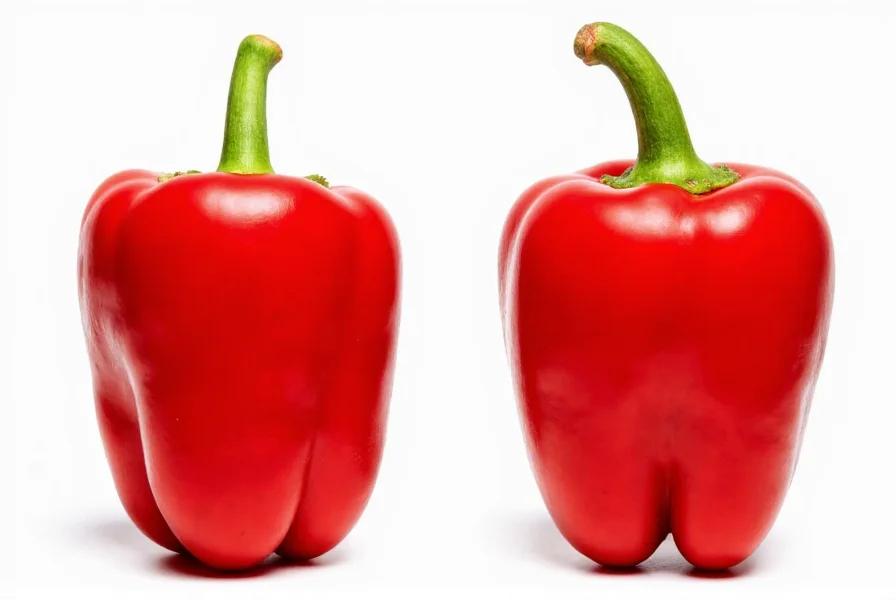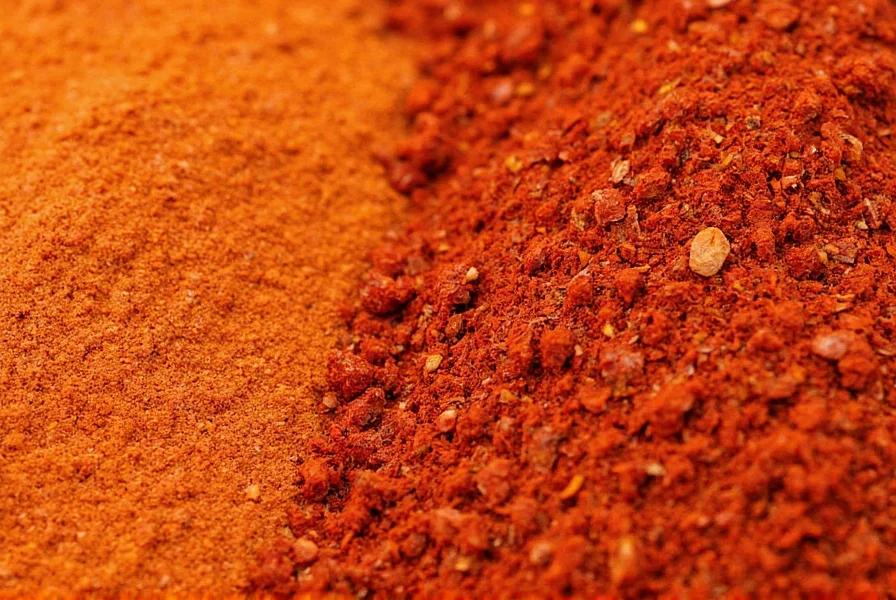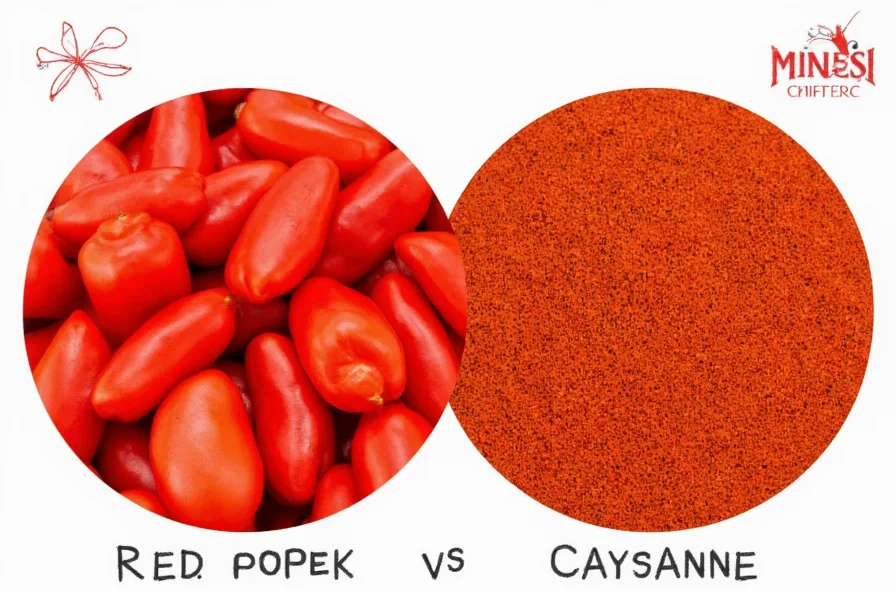Many home cooks and even experienced chefs confuse red pepper and cayenne, often using the terms interchangeably. This misunderstanding can lead to culinary disasters when unexpected heat levels alter a dish's flavor profile. Let's clarify the botanical, culinary, and practical differences between these commonly mixed-up ingredients.
Understanding the Botanical Relationship
Both red pepper and cayenne belong to the Capsicum annuum species, which encompasses hundreds of pepper varieties. The confusion stems from inconsistent naming conventions across different regions and culinary traditions.
Cayenne pepper specifically refers to elongated, pointed chili peppers that ripen to a bright red color. True cayenne varieties include the cayenne long hots and bird's eye chilies. In contrast, "red pepper" is a broader term that can describe:
- Mature bell peppers (zero Scoville units)
- Various red chili peppers
- Ground red pepper seasoning (which may or may not contain cayenne)
- Paprika (sweet or smoked)
Heat Level Comparison: The Critical Difference
The most significant distinction lies in their heat intensity. Understanding Scoville Heat Units (SHU) helps clarify this difference:
| Pepper Type | Scoville Heat Units | Heat Level Description |
|---|---|---|
| Cayenne pepper | 30,000-50,000 SHU | Sharp, immediate heat that builds |
| Red chili flakes | 15,000-25,000 SHU | Moderate heat with varying intensity |
| Sweet red bell pepper | 0 SHU | No heat |
| Smoked paprika | 500-2,500 SHU | Subtle warmth with smoky flavor |
When recipes call for "red pepper," they might mean the mild paprika used in Hungarian goulash or the fiery cayenne required for authentic Louisiana hot sauce. This ambiguity causes frequent substitution errors.
Culinary Applications and Flavor Profiles
While both contribute color and some degree of heat, their flavor profiles differ substantially:
Cayenne pepper delivers a clean, sharp heat with subtle fruity undertones. It's essential in:
- Cajun and Creole cuisine
- Hot sauces and salsas
- Spice blends like curry powder
- Marinades requiring immediate heat penetration
General red pepper varieties offer more diverse flavor profiles:
- Sweet red bell peppers provide earthy, vegetal notes without heat
- Smoked paprika contributes complex smokiness with mild warmth
- Red chili flakes offer variable heat with toasted pepper flavor

Substitution Guidelines for Home Cooks
Understanding when you can substitute one for the other prevents recipe failures. Consider these practical substitution rules:
- Using cayenne instead of mild red pepper: Use 1/8 teaspoon cayenne for every 1 teaspoon of paprika or red pepper flakes. Always add gradually and taste.
- Using red pepper flakes instead of cayenne: Substitute 1:1 but expect less intense heat. May require additional time for flavors to develop.
- For color without heat: Sweet paprika works when a recipe needs red color but no spiciness.
- For authentic cayenne flavor: No perfect substitute exists. If unavailable, consider using hot sauce or crushed red pepper with adjusted quantities.
Nutritional Differences Worth Noting
Both peppers contain capsaicin (the compound responsible for heat) and vitamin C, but proportions vary significantly:
- Cayenne contains approximately 3-5 times more capsaicin than standard red chili flakes
- Red bell peppers have higher vitamin C content (190mg per 100g) compared to cayenne (144mg)
- Cayenne shows stronger anti-inflammatory properties due to higher capsaicin concentration
- Both support metabolism, but cayenne's effects are more pronounced
Common Misconceptions Clarified
Several persistent myths confuse home cooks:
Myth: "Cayenne and red pepper flakes are the same thing."
Fact: Most commercial red pepper flakes contain a blend of辣椒 varieties, not pure cayenne. True cayenne is consistently hotter.
Myth: "All red peppers are spicy."
Fact: Red bell peppers have zero heat, while cayenne is quite hot. Color doesn't determine spiciness.
Myth: "Cayenne is a brand name for red pepper."
Fact: Cayenne refers to specific pepper varieties originating from French Guiana, named after the city of Cayenne.

Practical Buying and Storage Tips
When purchasing these ingredients, pay attention to labeling details:
- Look for "pure cayenne" on spice labels rather than just "cayenne pepper" which may be blended
- Fresh cayenne peppers should be firm, glossy, and uniformly red
- Ground spices lose potency after 6 months; buy whole peppers and grind as needed for maximum flavor
- Store dried peppers in airtight containers away from light and heat
Understanding the distinction between red pepper vs cayenne powder versus red pepper flakes versus cayenne pepper varieties prevents culinary mishaps and helps you achieve authentic flavors in global cuisines. Whether you're making a delicate Spanish paella or fiery Szechuan stir-fry, selecting the appropriate pepper makes all the difference.
Is cayenne pepper the same as crushed red pepper?
No, they are not identical. Crushed red pepper typically contains a blend of various red chili peppers including cayenne, but also other varieties like serrano and red jalapeño. Pure cayenne is consistently hotter and has a more uniform flavor profile.
Can I substitute paprika for cayenne in recipes?
Yes, but with caution. Sweet paprika has only mild warmth (500-2,500 SHU) compared to cayenne's 30,000-50,000 SHU. Use 3-4 times more paprika to approximate cayenne's heat level, but recognize you'll get different flavor notes. For authentic heat, consider adding a pinch of cayenne to paprika rather than complete substitution.
Why do some recipes specify 'red pepper' while others say 'cayenne'?
Recipe specificity depends on regional traditions and required heat precision. American recipes often use 'red pepper' generically, while professional and international recipes typically specify 'cayenne' when that exact heat level and flavor are essential to the dish's authenticity.
Does cayenne pepper lose heat when cooked?
Capsaicin (the compound that creates heat) is relatively stable during cooking. While some heat may mellow slightly with prolonged cooking, cayenne maintains most of its spiciness. For controlled heat distribution, add cayenne early in the cooking process; for sharper heat, add it near the end.











 浙公网安备
33010002000092号
浙公网安备
33010002000092号 浙B2-20120091-4
浙B2-20120091-4